Description
Toys with Soul
During my dad’s childhood in the 1960s, toy soldiers, a.k.a little green army men, were go-to toys for young boys in many parts of suburban America. Overseas, however, it was different. Europe had its equivalent of the green army men: the little peloton riders.
The peloton riders, much like the toy soldiers in America, were at their peak of popularity in the 1950s and ‘60s. However, unlike the cheap plastic toy soldiers that were commonplace in the U.S., every cyclist figurine was made of metal and painted by hand, resulting in a beautiful, straightforward toy. Beyond the familiar pose of a rider in the drops, there were follow cars, caravan motos, riders pose
d as race winners or drinking from a water bottle, soigneurs, fans, and finish-line banners. Like the green army men, the riders helped children play out their dreams, reenact their favorite moments from races, have epic battles on the famous climbs
of the Tour, or anything else they could think up.
With time, the hand-painted metal figures gave way to cheaper metal output with decals and, ultimately, plastic riders. Today, the era of these toys has largely passed. With few exceptions, contemporary availability of this genre is limited primarily to reproductions of vintage Tour de France caravan vehicles.
Like many things collectible, people seem to be enamored with repurchasing their childhood. No visit to a collector swap meet in France or Belgium is complete without reviewing a seller’s table searching for metal riders and vintage die-cast caravan vehicles. The reason for wanting these mementos can vary between collectors, and they go beyond simply replacing a memory of a toy from their childhood. It could be the historical significance they carry or perhaps aesthetic and decoration. Whatever the reason, these figurines have cemented themselves in cycling nostalgia, and even if all the paint wears off, that will not change.


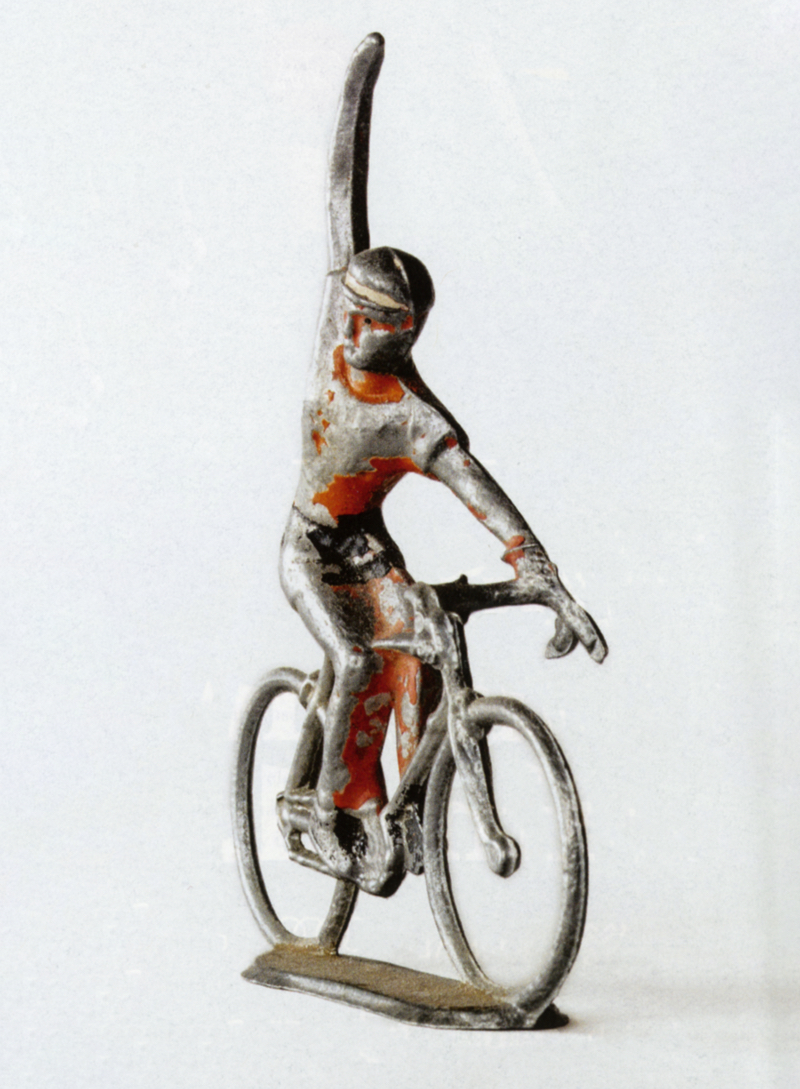
By Trevor Horton
Peloton Magazine, 2022 Tour de France Issue

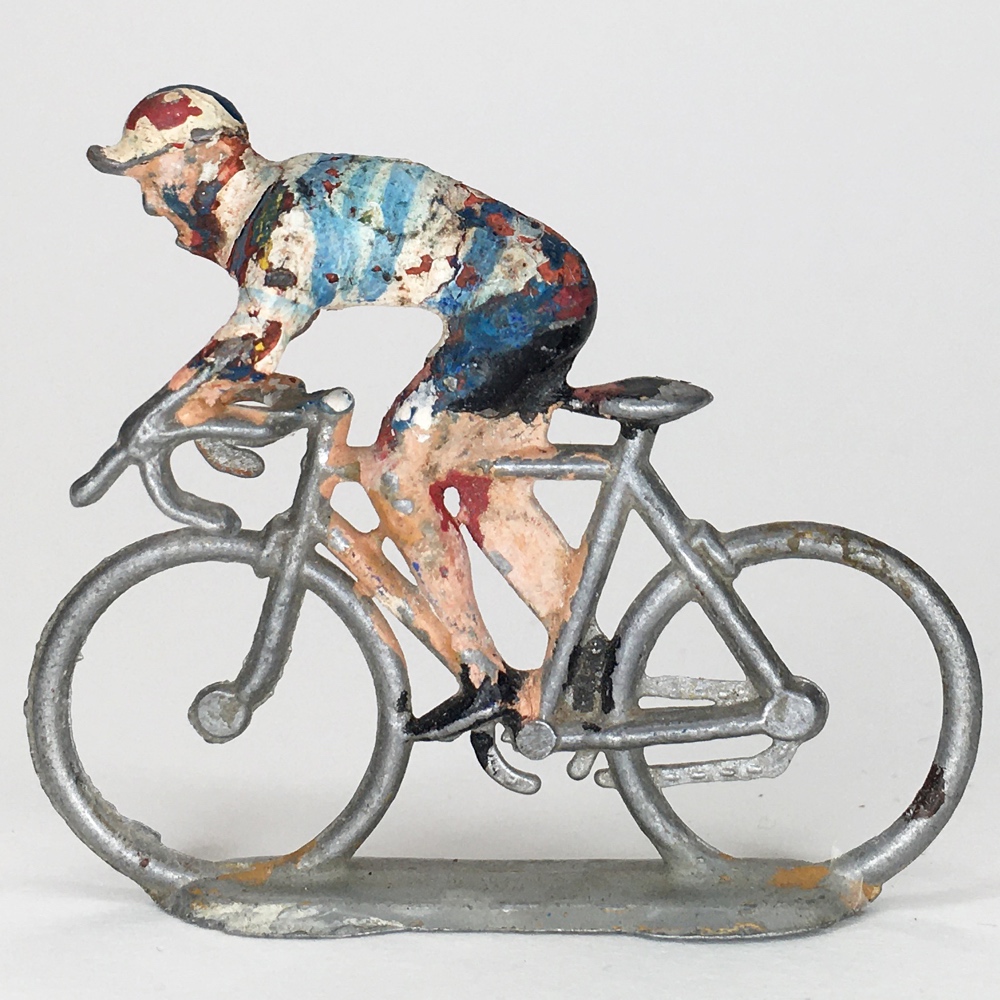
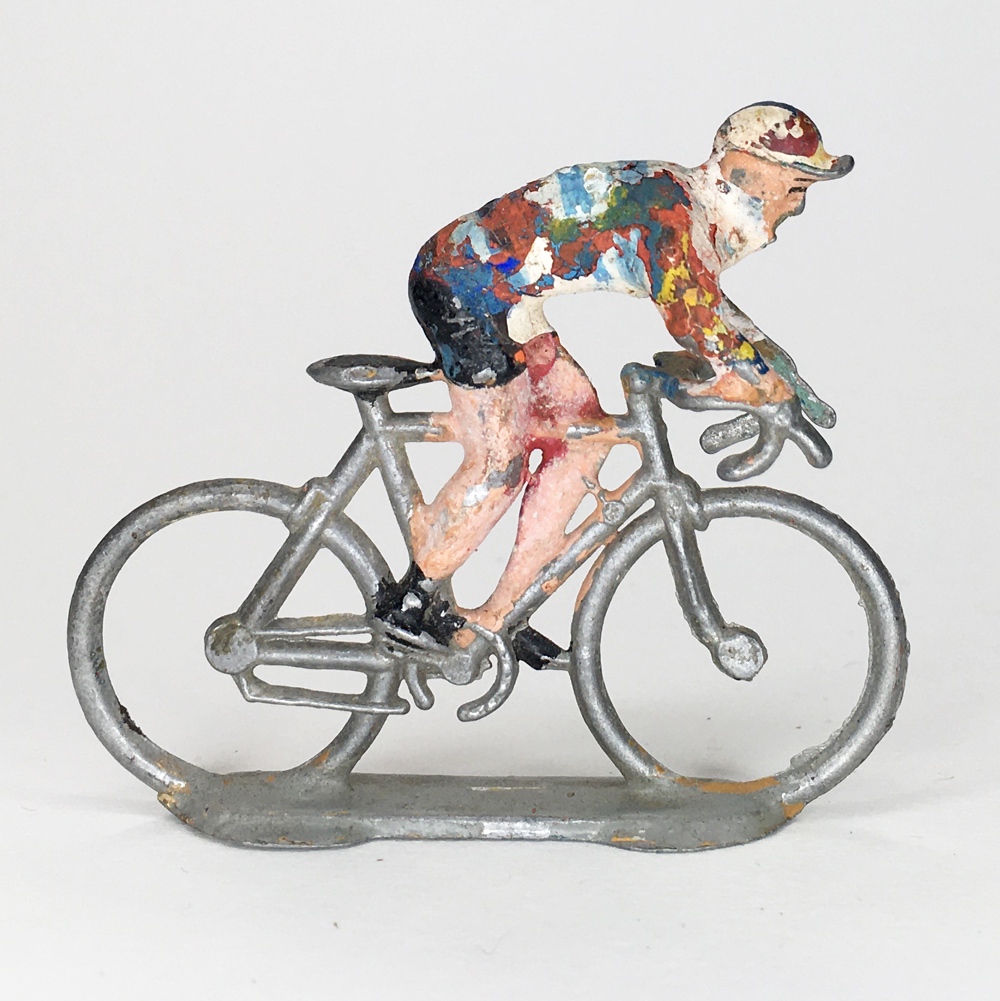
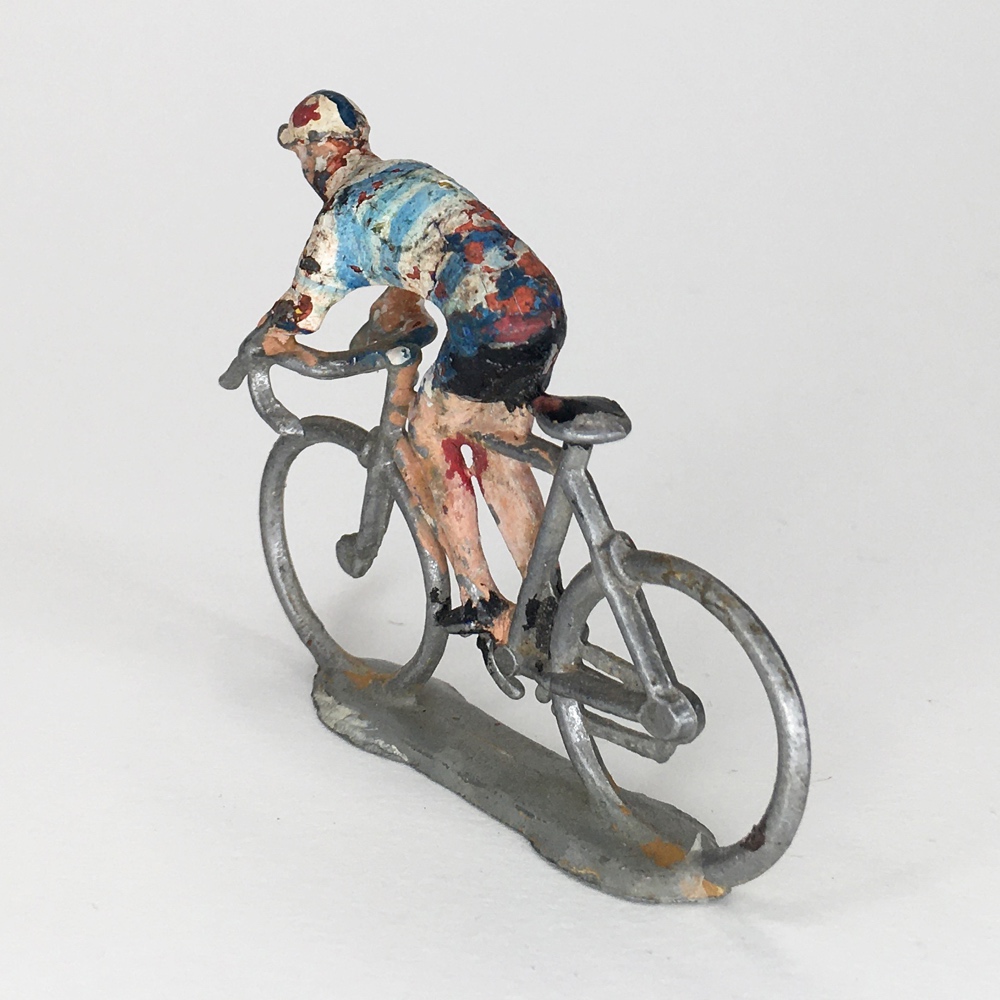
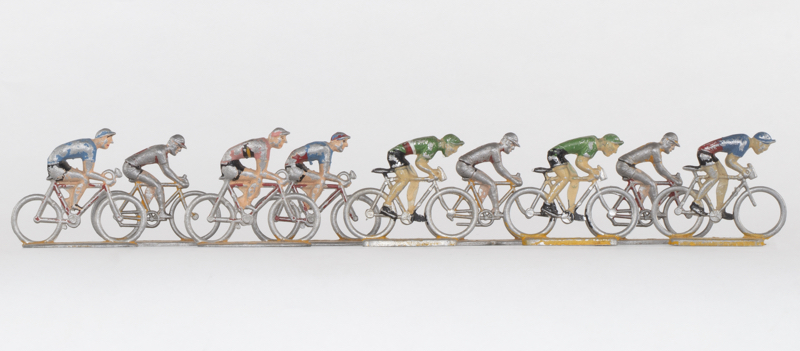
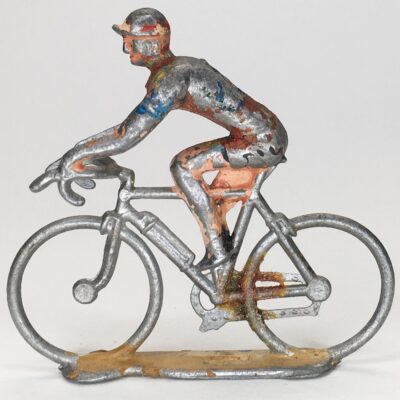
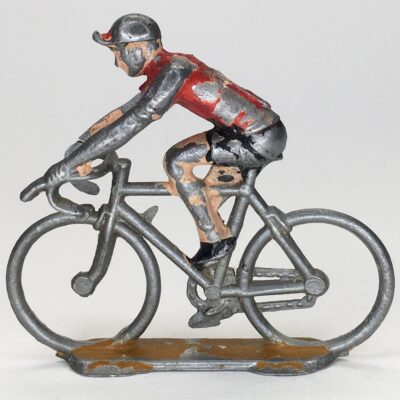
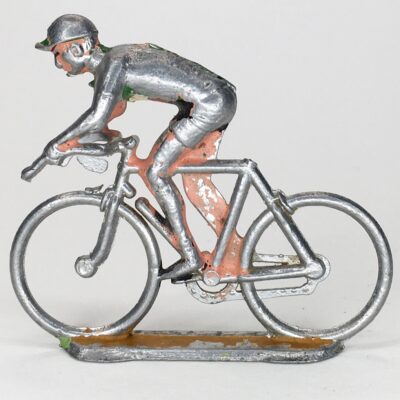
Recent Comments